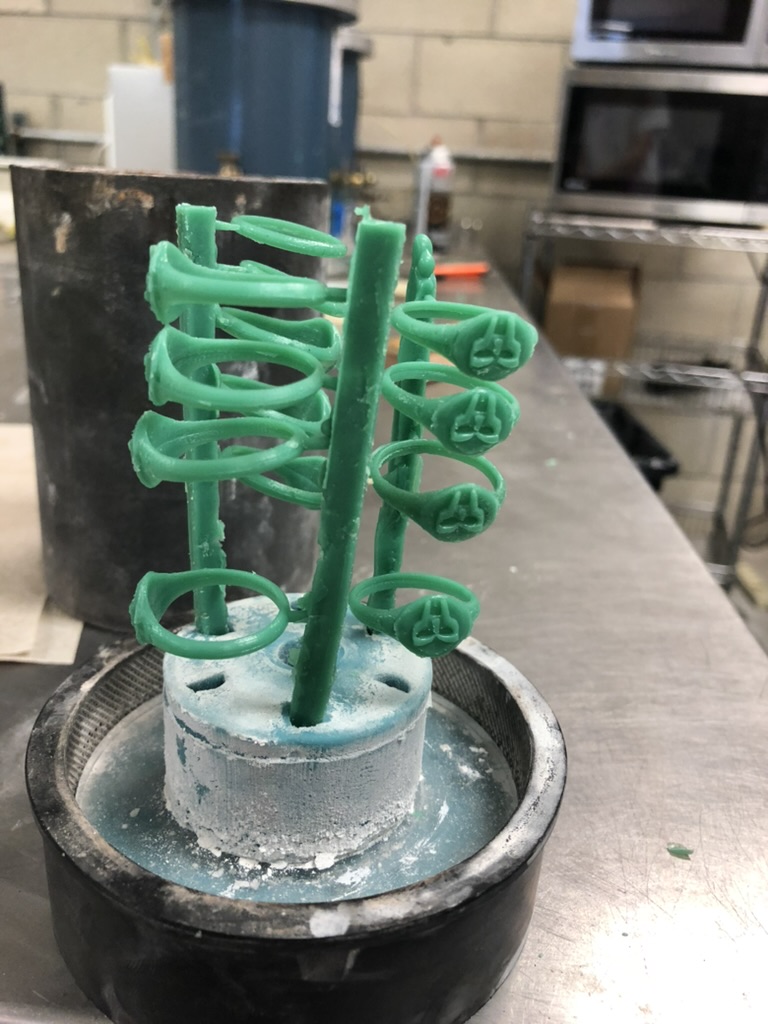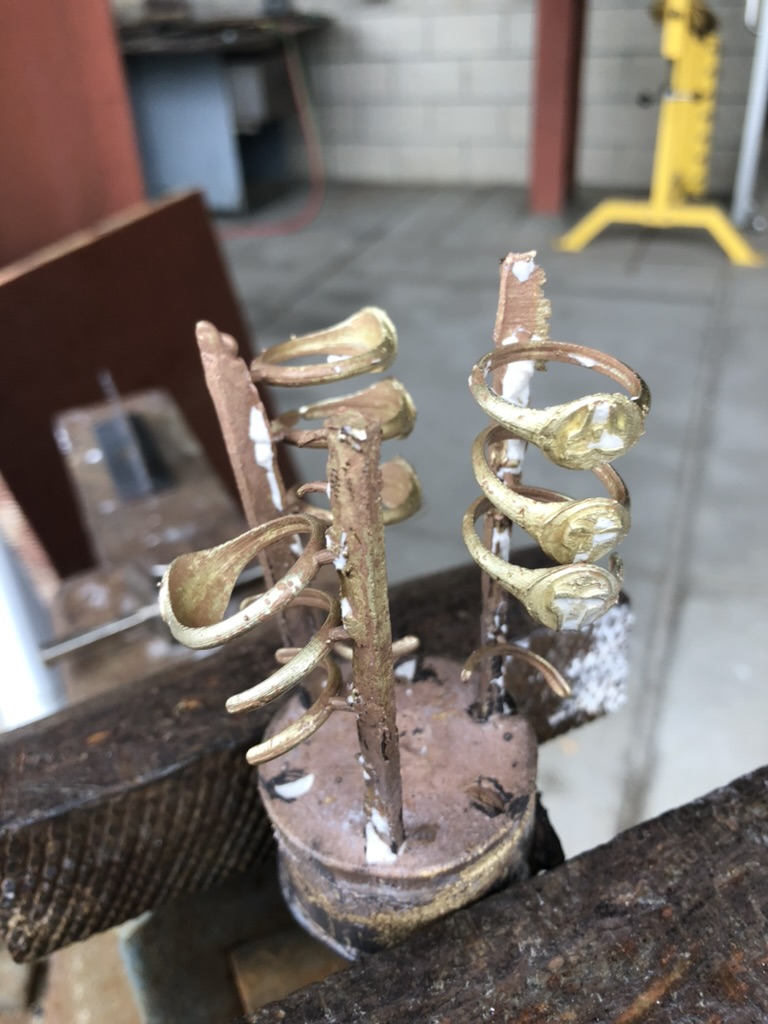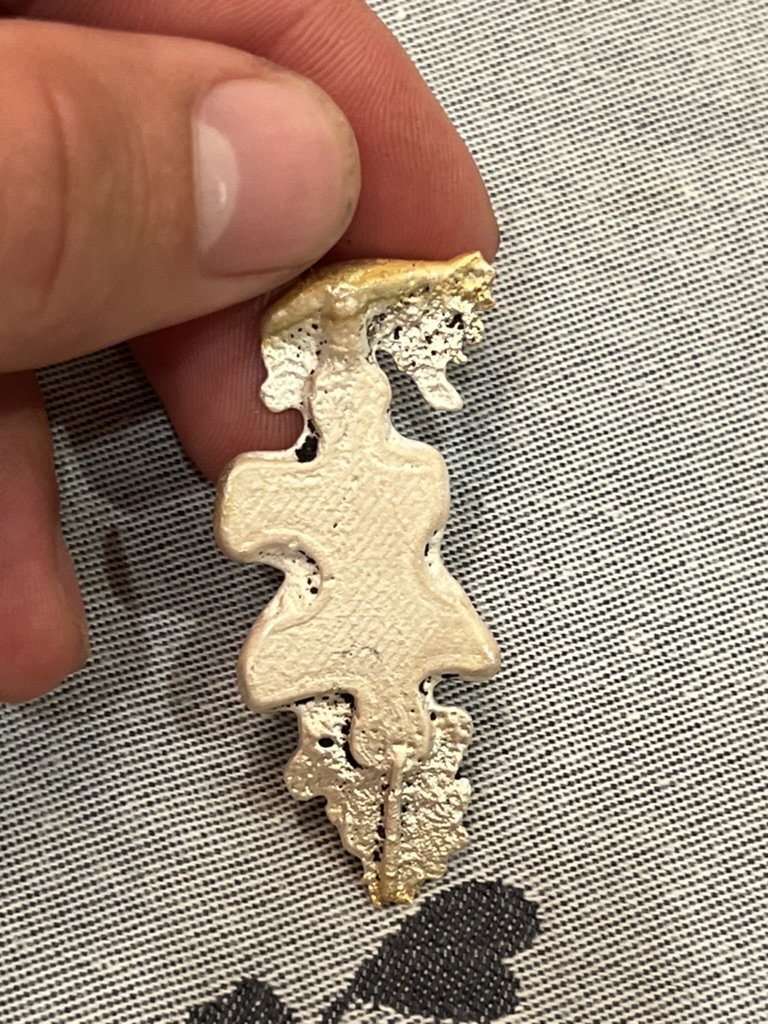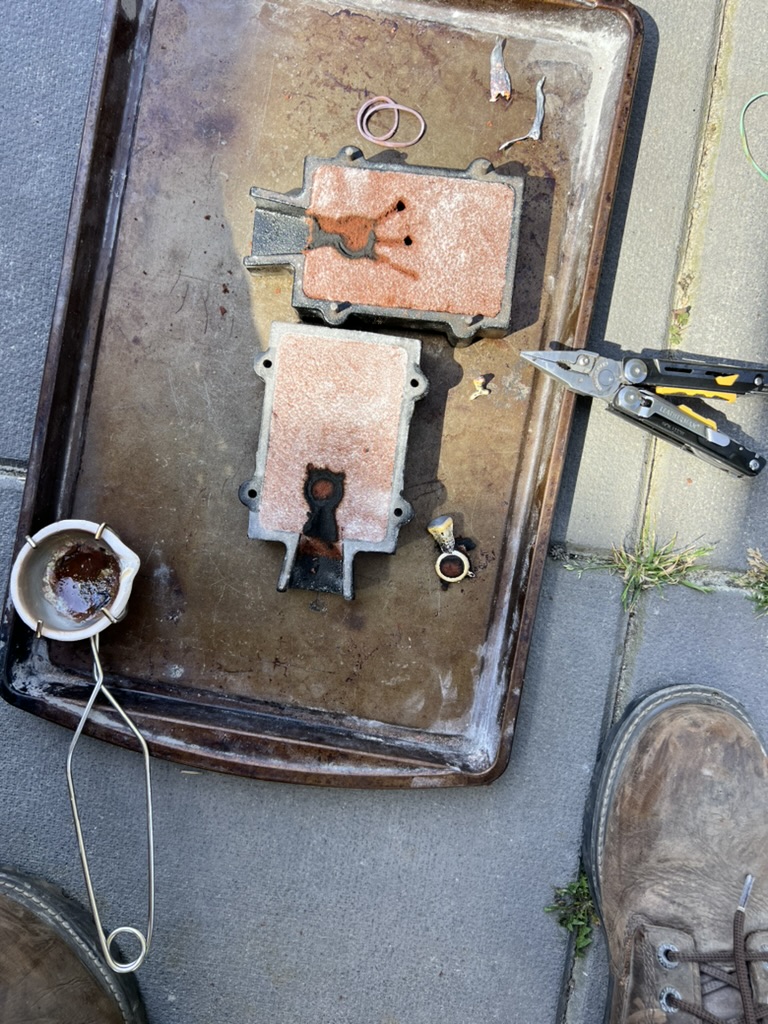Casting
Project Details
- Category: Art/Manufacturing
- Project Date: November 2021 and June 2024
- Attachments:
Metal Casting Rings – Lost Wax and Sand Casting
During my freshman year at Cal Poly, I took a casting course that got me interested in metalworking. The next quarter, I started an independent lost wax investment casting project. I designed and 3D printed negative molds, then used a pressurized wax injector to make wax patterns. The designs included a simple ring and another with an embossed MF DOOM mask. I attached the patterns to a sprue, also 3D printed, to create a full casting tree.
I covered the wax tree in plaster to form the mold. After burning out the wax in a high-temperature oven, I cast the rings in brass using the university’s foundry. The final results were sharp and clean. They showed how accurate and repeatable the investment casting process can be, especially for small parts.
I revisited the project the summer before senior year, this time using sand casting at home. I switched to 3D-printed positive models and made molds for rings and custom charms. One of them was a puzzle piece charm. I melted down U.S. half dollars to get the silver for casting. But my home setup had limits. I used a handheld blowtorch and coarse sand, which reduced accuracy and surface quality.
The sand cast parts were less refined than the lost wax castings, but the project was still useful. It showed the tradeoffs between the two methods, especially in surface finish, heat control, and geometric detail.
These projects helped me understand small-scale metal casting and made me more interested in metalwork. Working with both processes showed how much care and control is needed to get good results, even on a small scale.




